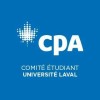
The Effects of Gentle Movements at the Ankle in Individuals With Diminished Range of Motion
Lateral Ankle SprainThe purpose of this study is the examine the effects of gentle movements applied to the ankle joint and stretching on self-reported function, ankle motion and stiffness in individuals who have suffered from an ankle sprain within the last year and have decreased ankle motion.

Cast Immobilization Versus Functional Therapy for Acute, Severe Lateral Ankle Sprains
Ankle SprainAcute, severe lateral ankle sprains are estimated to comprise between 3-5% of emergency department visits and are the most common musculoskeletal injury in the physically active population. Although the current accepted treatment of ankle sprains is to encourage early mobilization with functional rehabilitation, there is little high-quality evidence directing this clinical practice. This pilot study is to: provide quantitative data for estimation of mean outcome scores and standard deviations to allow subsequent sample size calculations evaluate the feasibility of the proposed study design assess patient enrollment issues specific to randomization into an active rehabilitation program compared to below knee immobilization.

Efficacy and Safety of Etoricoxib in Acute Ankle Sprain: A Double-Blind Comparative Study Among...
Sprains and StrainsContusionsThe investigators will study 2 doses of etoricoxib to prove that 60 mg once daily will be non-inferior to etoricoxib 90mg daily (for 14 days) in the treatment of acute ankle sprain in sports. The investigators objective is to discuss the point that the investigators will follow the minimal dose that is effective for the treatment of this acute condition in orthopedic.

Neurocryostimulation for Acute Lateral Ankle Sprain
Ankle SprainThe objective of this exploratory randomized control trial is to compare, in participants with acute lateral ankle sprain (LAS) , the reduction of symptoms and functional limitations between two groups of subjects who undergo a conventional rehabilitation program with (experimental group) or without CRYOFOS (comparison group). The hypothesis is that CRYOFOS will lead to a faster reduction of symptoms and functional limitations, and a faster return to daily living activities.Thirty-six participants of 18 years of age and older with acute LAS (sustained a LAS three days or less before the first evaluation session) will be recruited and randomly assigned to either a group receiving conventional rehabilitation program with the addition of CRYOFOS (experimental group; n=18), or to a group only receiving the conventional rehabilitation program (comparison group; n=18). This single-blind (evaluator), parallel-group RCT will include five evaluation sessions over 6 weeks (baseline, day 7, week 2, week 4 and week 6) and 8 treatment sessions (1st and 2nd weeks: 3 sessions/week; 3rd and 4th weeks: 1 session/week) during a 4-week period. The primary outcome will be the functional limitations, evaluated using the Lower Extremity Functional Scale (LEFS).

Efficacy and Safety of Salonsip Compared to Sabiá Plaster
ContusionsSprains3 moreThe purpose of this study is to evaluate the efficacy in reducing signs and symptoms in patients with contusions, sprains, muscular injuries and injuries with less than 24 hours early or holders of myalgia, pain and tendonitis in regions miofasciais articulated with Salonsip compared to Sabiá plaster. It is clinical, open, multicenter, randomized, prospective and comparative, with patients entering at random. Patients will be included in sufficient quantity to achieve the minimum number of 70 evaluable patients.

Efficacy of Lidocaine Patch in Acute Musculoskeletal Pain in the Emergency Department
Acute Musculoskeletal DiseaseSprains5 moreThis study evaluates the addition of a lidocaine patch to ibuprofen in the treatment of acute musculoskeletal pains. Half of the participants will get only ibuprofen for their pain, while other half will receive lidocaine patch plus the ibuprofen. After addition of the pain medications, the participants will be followed for their pain scores and return visits.

"THE EFFECTS OF LOW LEVEL LASER THERAPY VERSUS STRAIN/COUNTER STRAIN TECHNIQUE IN ACUTE SOFT TISSUE...
Hamstring InjuryStrain Counter StrainMuscle strain injuries are common in sports but are often misdiagnosed and maltreated. Their significance is often underestimated because most athletes can continue their daily activities soon after the injury. Proximal hamstrings strains have attracted greater attention because they have a high incidence which is approximately 42%.

The Efficacy of Hypertonic Dextrose Injection to Anterior Talofibular Ligament Sprain
Ankle SprainsAnterior talofibular ligament is the most injured ligament in ankle sprain. Investigators will include ankle sprain patients who have ankle pain or instability more than 3 months. Ultrasonography will be done for confirm ligament injury. Participants will be randomized into two groups. Participants in dextrose injection group will accept dextrose 15% injection to tendon and enthesis. In the other hand, subcutaneous sham injection to control group. Pain condition, stability test and function test, will be evaluated in 1 week, 4 weeks and 12 weeks after injection.

Comparative Study of Two Radiological Modalities, Ultrasonography Versus Stress Radiography, in...
Lateral Ankle SprainThe aim of our study is to determine the most efficient radiologic examination to assess the ankle sprain seriousness and so improve the therapeutic care.

Characterization of LV Strain Patterns in Mildly Elevated PCWP and PAH.
HypertensionPulmonary Artery2 moreThe purpose of this study is to determine if patients with pulmonary hypertension and mildly elevated heart pressure known as PCWP will exhibit different patterns on echocardiography and that these patterns will predict treatment response to sildenafil, a drug given for this condition.
